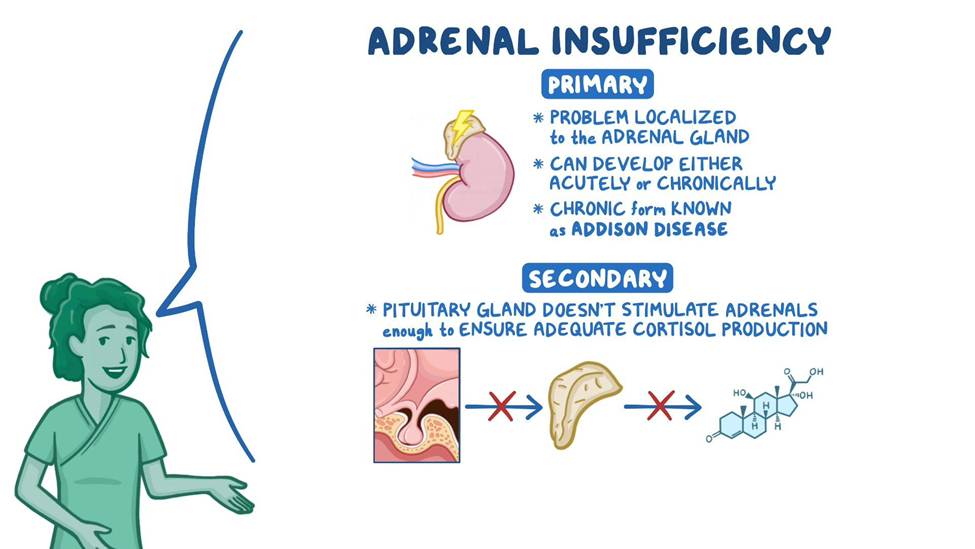A patient is post-op from knee surgery. The patient has been receiving Morphine 4 mg IV every 2 hours. The nurse notices the patient is exhibiting a respiratory rate of 8 and is extremely drowsy. Which of the following conditions is the patient at risk for?
Respiratory acidosis
Hypokalemia
Metabolic acidosis
Respiratory alkalosis
The Correct Answer is A
A. Respiratory acidosis:
This occurs when there is inadequate removal of carbon dioxide (CO2) by the respiratory system. In the case of the patient post-op from knee surgery receiving Morphine, the opioid can cause respiratory depression, leading to the retention of CO2 and the development of respiratory acidosis. Signs include a decreased respiratory rate and drowsiness.
B. Hypokalemia:
This is a condition characterized by low levels of potassium in the blood. While opioids can cause constipation, they are not directly associated with hypokalemia.
C. Metabolic acidosis:
This occurs when there is an increase in acid production or a loss of bicarbonate, leading to an imbalance in the body's acid-base status. The symptoms of metabolic acidosis are not typically associated with opioid use.
D. Respiratory alkalosis:
This occurs when there is excessive elimination of CO2, leading to decreased carbon dioxide levels in the blood. Opioids, especially in higher doses, are more likely to cause respiratory depression and acidosis rather than alkalosis. The patient's low respiratory rate and drowsiness are indicative of respiratory acidosis rather than alkalosis.
Nursing Test Bank
Naxlex Comprehensive Predictor Exams
Related Questions
Correct Answer is A
Explanation
A. Methylprednisolone (Solu-medrol):
Explanation: Acute adrenal insufficiency is a life-threatening condition characterized by a sudden deficiency of adrenal hormones. In this situation, intravenous glucocorticoids such as methylprednisolone are administered to replace the deficient hormones and stabilize the patient. This is the appropriate intervention to address the acute adrenal crisis.
B. Hypotonic saline:
Explanation: Hypotonic saline is not the first-line treatment for acute adrenal insufficiency. The priority is to replace glucocorticoids to address the adrenal hormone deficiency.
C. Potassium (K-dur):
Explanation: While electrolyte imbalances can occur in adrenal insufficiency, potassium replacement alone does not address the primary issue of glucocorticoid deficiency in acute adrenal insufficiency.
D. Regular Insulin:
Explanation: Regular insulin is not the primary treatment for acute adrenal insufficiency. Glucocorticoid replacement, such as methylprednisolone, is the key intervention.
Correct Answer is C
Explanation
A. The need to match the daily steroid dose to immediate symptoms:
Explanation: Adjusting the steroid dose based on immediate symptoms is not a recommended approach. Patients should follow the prescribed regimen provided by their healthcare provider.
B. The importance of monitoring liver function:
Explanation: While monitoring liver function is important for some medications, it is not the primary focus when teaching about hormone replacement therapy in Addison's disease. The emphasis is on the need for life-long steroid replacement.
C. The need for life-long steroid replacement:
Explanation: Patients with Addison's disease require life-long steroid replacement therapy to compensate for the deficiency in adrenal hormones. It's important for the patient to understand that adherence to the prescribed steroid regimen is essential for maintaining health and preventing adrenal crisis.
D. The possibility extreme weight loss from the use of corticosteroids:
Explanation: While corticosteroids can have various side effects, extreme weight loss is not a typical or desired outcome of steroid therapy for Addison's disease. Weight changes and potential side effects should be discussed, but the emphasis should be on the importance of long-term steroid replacement.

Whether you are a student looking to ace your exams or a practicing nurse seeking to enhance your expertise , our nursing education contents will empower you with the confidence and competence to make a difference in the lives of patients and become a respected leader in the healthcare field.
Visit Naxlex, invest in your future and unlock endless possibilities with our unparalleled nursing education contents today
Report Wrong Answer on the Current Question
Do you disagree with the answer? If yes, what is your expected answer? Explain.
Kindly be descriptive with the issue you are facing.
